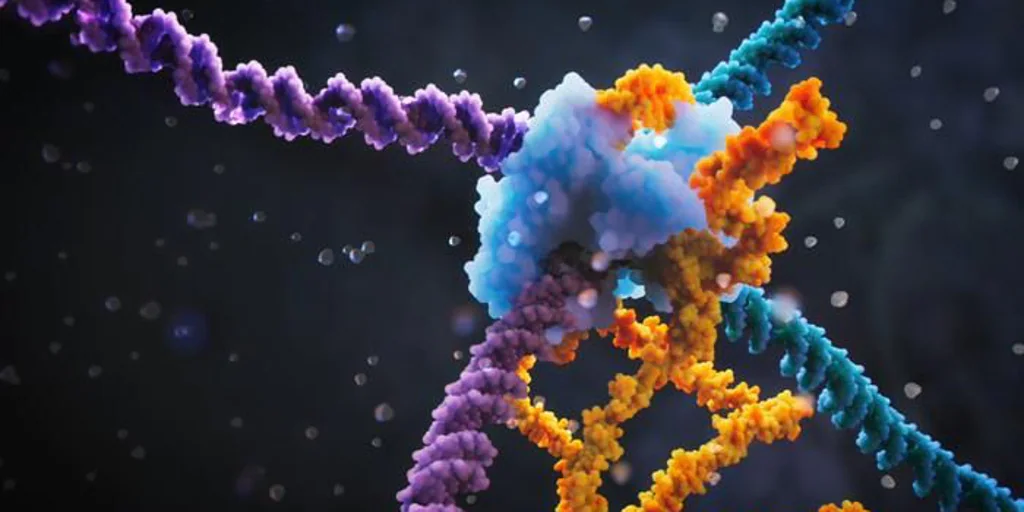They have found a way to “program” DNA according to their wishes

This is a real step forward for genetic engineering. A mechanism recently discovered by a team of researchers from the Arc Institute, called “bridging recombinase,” could provide scientists with a powerful and extremely precise tool for “programming” DNA to … combine and order as you wish.
The discovery, recently published in the journal Nature, explains that this programmable “DNA bridge” allows researchers to specify any genetic sequence they want and any DNA molecule they want to later insert into the genome.
“RNA splicing,” says Patrick Xu, lead author of the paper, “is a fundamentally new mechanism for biological programming. Bridged recombination can universally modify genetic material through insertion, deletion, inversion, etc. of a specific sequence, creating a “word processor” for the living genome that goes beyond CRISPR.”
Programmable DNA
The recombination bridge comes from elements called insertion sequence 110 (IS110), one of countless types of transposable elements, also called “jumping genes,” that cut and paste, changing positions both within and between microbial genomes. These elements are present in all forms of life and have evolved into truly expert DNA manipulation machines that organisms use to survive. IS110 elements are minimal and consist of a single gene encoding the enzyme recombinase, as well as a series of DNA segments clustered around it, the function of which remains a mystery.
In his laboratory, Xu discovered that when IS110 is excised from the genome, the ends of the noncoding DNA join together to form an RNA molecule (an RNA bridge) that folds into two loops. One of these loops binds to the S110 element itself, and the other to the target DNA into which it is inserted. Bridging RNA is the first example of a dual-specificity guide molecule.
Each of the two bridging RNA loops can be programmed independently, so researchers can mix and match any DNA sequence of interest with a target and a donor. This means that the system can go far beyond its natural function of inserting the IS110 element and instead allow the insertion of any desired genetic cargo, such as a functional copy of a defective disease-causing gene, anywhere in the genome. In this work, the team demonstrated an efficiency of over 60% for inserting the desired gene into E. coli with over 94% specificity for the correct location in the genome.
“These programmable RNA bridges,” says Nick Perry, co-author of the study, “distinguish IS110 from other known recombinases that lack an RNA component and cannot be programmed. “It’s as if the RNA bridge is a universal power adapter that makes the IS110 compatible with any outlet.”
The discovery complements work carried out in Hiroshi Nishimasu’s laboratory at the University of Tokyo, reported in a second Nature paper, in which cryo-electron microscopy was used to determine the molecular structures of two recombinase-bridged RNA loops.
According to the researchers, with further research and development, this bridge mechanism promises to be the beginning of a third generation of RNA-guided systems, beyond the well-known “cut and paste” mechanism of the CRISPR method and so-called RNA interference (RNAi). The programmable RNA bridge would essentially offer for the first time a single mechanism that would allow us to rewire the DNA of our genetic inheritance at will.
“This bridged recombination mechanism,” says senior author Matthew Durran, “addresses some of the most important problems faced by other genome editing methods. “The ability to programmatically rearrange two DNA molecules opens the door to great advances in genome design.”
